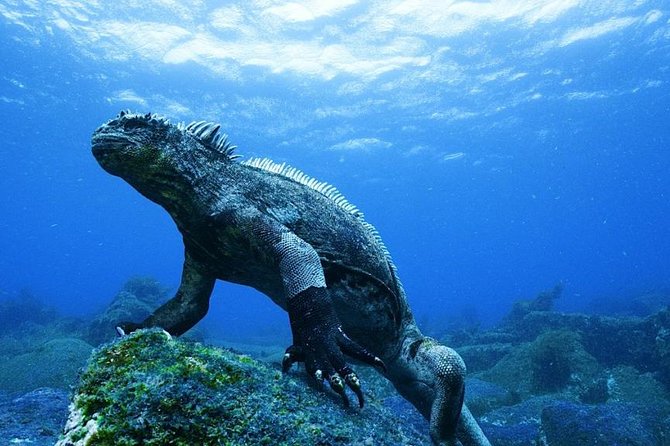The government has several plans in Galapagos such as the first photovoltaic project and the expansion of the marine reserve, but the usual budget problem in the National Park remains unresolved.
President Guillermo Lasso proposed creating a new law for Galapagos, in his government plan, that encourages investment and ensures the sustainability of the archipelago.
According to Lasso, the current Special Regime Law and taxes and procedures discourage this objective.
An example of the president’s decisions in this direction is the concession of the Conolophus photovoltaic project, with a private investment of $63 million and a duration of 25 years. The goal is to reduce the use of fossil fuels on the islands.
Although the Ministry of Energy awarded the project in August 2021, in wasn’t until December that the Ministry of the Environment requested the modification of the Baltra regulations to allow its construction and execution.
Thus, President Lasso signed executive decree 301 on December 27th of last year. Through this document, the zoning of the island for conservation, restoration of ecosystems and reduction of impacts was modified to a conservation and sustainable use zone.
Since 2009, when Baltra joined the Galapagos National Park (PNG), the regulations governing the archipelago only allowed the constructions required by the Galapagos National Park (PNG) and for homes of the Armed Forces that perform functions on the island.
Now, in addition to the PNG, the range is opening, in general, for the construction of essential buildings “of the General Directorate of Civil Aviation, of the Armed Forces and, those projects of the electrical sector, determined by the Ministry of Energy.”
When asked about the implications and impact of decree 301 on the Archipelago, the Ministry of the Environment offered no response.
This is not Lasso’s only decision regarding the Galapagos. On January 14th, the President created a second marine reserve, called “Brotherhood” or Hermandad, with an area of 60,000 square kilometers.
With decree 319, extractive activities will not be allowed in 30,000 square kilometers and areas of critical oceanic ecosystems, migratory routes and feeding areas of threatened marine species will be conserved. While in the other 30,000 kilometers fishing activities are allowed, except for the use of longlines.
The problems that persist in Galapagos
Since 2017, large-scale fishing around the island’s exclusive economic zone (EEZ) has increased. The international fleet that patrols the Ecuadorian maritime limits every year is mainly Chinese, and annually it causes the country to search for solutions to protect the species of the maritime corridors.
Despite the rapprochement with the Asian giant, the problem of unreported fishing is regularly repeated and the agreements for a moratorium are not enough to solve the problem.
In the midst of this scenario, Ecuador, together with Colombia, Panama, and Costa Rica, announced in 2021 the creation of the largest marine reserve in the hemisphere, which, on behalf of the government of President Lasso, materialized with decree 319.
In addition, the government continues to work on finishing the studies of the submarine platform to propose the extension of the maritime limits to the Convemar (United Nations Convention on the Law of the Sea).
This work is made more difficult by the lack of equipment and resources, since the Ministry of Defense had to give up the acquisition of an oceanographic vessel. The planned goal to present the project is 2026.
Lack of money for security
But the lack of money also impacts daily life in the Galapagos National Park, since the surveillance area is extensive and, thanks to the new marine reserve, is now larger.
PNG authorities must monitor the boats that circulate through the reserve and their activities, which can range from illegal fishing to crimes, such as drug trafficking. But the capabilities are limited. Although the Ministry of the Environment says that they will be strengthened with new agreements.
At the end of 2020, the Park was looking for the resources to renew its surveillance fleet, because the modern surveillance system they maintain needs this complement. And, before the creation of the Hermandad marine reserve, the entity stated that with its creation they would require more human, technological and financial resources.


0 Comments